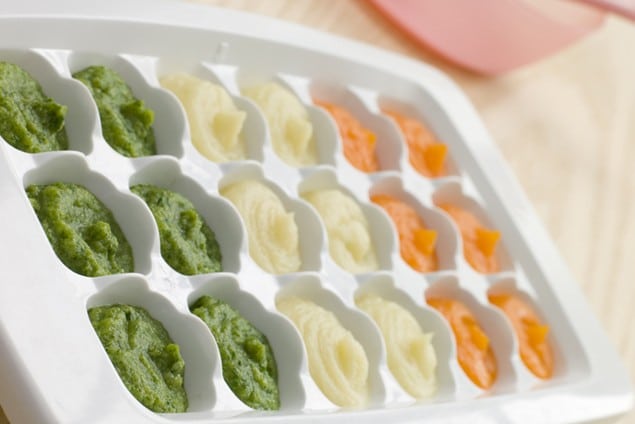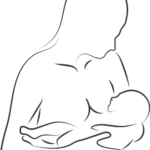Image credit to Boldsky
Your Guide to Freezing Baby Food Making your own baby food does help save some money while at the same time ensuring that your little sweetpea gets access to healthy and balanced nutrition. However, for most of us, time and energy are always in short supply to whip up a fresh batch of baby food at each of our baby’s meals. This is where the idea of frozen baby food really comes in handy.
“Freezing baby food is a total game-changer,” says Alicia Chacha Miller, RD, LDN, a registered dietitian at The Cardamom. “It’s smart in respect to time and money but also to ensure your little one gets a mix of all those good nutrients they need to grow and thrive.”
Although many of us have a rough idea of how freezing baby food works, it’s equally common to have lots of questions when starting: from how you store the foods and which ones keep well, to how you know you’re handling the food safely.
Methods of Freezing Baby Food
There are a few ways you can freeze your baby food purees. Probably one of the easiest and most popular ways to freeze baby food is to use something that you probably already have in your freezer—an ice cube tray.
According to Pierrette Mimi Poinsett, MD, pediatrician and consultant for Mom Loves Best, ice cube trays are generally the cheapest. You can then either leave the food in the ice cube tray or transfer it to another device for storage. “Once the food is frozen, the cubes can be popped out of the tray and stored in the freezer in zip-lock bags,” Dr. Poinsett explains. Each receptacle for an ice cube is equal to approximately 1 oz of baby food when taking into consideration the recommendations set by the Academy of American Pediatrics.
Other options include silicone containers made for baby food, Miller says. “Some people also use freezer bags to freeze baby food in flat, resealable pouches, or those handy breastmilk storage bags
to get the job done, she offers. Of course, you should make sure that whatever plastic container you use is BPA-free.
艹
Second, when freezing baby food, use airtight, watertight containers to store it, like freezer-safe glass or plastic jars, or freezer bags. In other words, says Miller, most glass or plastic containers will work.
pauperize
One type of jar you may need to be leery of a glass jar. Food generally expands when frozen, and sometimes glass jars can chip in the freezer, which means small shards of glass could get into your baby’s food. If you use glass containers, make sure they’re specifically labeled freezer safe, he recommends. You also may want to consider not filling the jar up to the brim to help decrease the risk of the jar expanding and cracking.
Best Baby Foods for Freezing
Guide to Freezing Baby Food
The good news is that there are very few restrictions on which foods to freeze. Really, any foods that your little one enjoys can be good for storage. “Most pureed baby food freezes like a charm, keeping its texture and consistency even after thawing,” says Miller.
Some of Dr. Poinsett’s top choices for freezing include:
Pureed fruits like blueberries, peaches, and other berries
Pureed vegetables, such as broccoli, cauliflower, carrots, green beans, peas, sweet potato, and squash (acorn squash, butternut squash, winter squash, and pumpkin)
Now, what about proteins? “Meats like chicken, beef, and fish are fine to freeze once they
are cooked,” says Dr. Poinsett. Also, foods like eggs, pasta, rice, and tofu may change texture when frozen and are best cooked before freezing, she says.
Some foods are best frozen in chunks and then pureed after defrosting, explains Dr. Poinsett. Citrus fruits, apricots, grapes, mangoes, melons, nectarines, papaya,
pears, plums, prunes.
Some fruits, such as bananas, apples, strawberries, and avocados, turn brown when frozen. But this is strictly a cosmetic change and does not reduce their nutritional value, according to Dr. Poinsett; thus, they are still safe to eat.
“A splash of lemon juice will help reduce browning,” Dr. Poinsett says. “However, you may want to mash these foods and not freeze them before eating.”
Also Read : When Can Babies Eat Chocolate?
How Long Can You Keep Baby Food in the Freezer?
Your Guide to Freezing Baby Food
Theoretically, pureed baby food could be frozen for quite a long time—up to six months, say experts like Dr. Poinsett. However, she also adds that frozen baby food is at its best quality and has its highest nutritional value in the first one to three months of storage. The FDA recommendation is that baby food should be eaten within the first three months of freezer storage.
Keep in mind, too, that commercially prepared frozen baby food can last longer in the freezer because it’s been pasteurized. “Store-bought fruit and veggie purées last a bit longer and
can be consumed safely closer to six to eight months,” Miller suggests.
How to Thaw Frozen Baby Food
So what do you do when it is time to dish up some frozen baby food to that hungry baby? “When you’re thawing out baby food, the safest bet is to let it defrost in the fridge for a few hours or overnight,” says Miller. “Steer clear of leaving it out at room temperature as that could cause bacterial growth, which we want to avoid at all costs, particularly for our littles.
In case you are in a hurry and the food has not had time to thaw out, according to Miller, you can heat it in a saucepan or run the container under cool water. You can also use your microwave’s “defrost setting” to thaw it. Always check the temperature before serving microwaved food since it tends to heat unevenly and can cause accidental burns.
Safety Considerations for Thawed Baby Food
Guide to Freezing Baby Food
Babies have a very underdeveloped immune system, which makes them prone to infections a lot more than other age groups, such as older children and adults. That is why it is very important to ensure good hygiene in preparing and storing baby food. “Keeping things clean when you are handling your baby’s food is very important to avoid contaminating with bacteria that may make your baby sick,” says Miller. “Be sure to wash your hands well with warm soapy water and make sure surfaces and storage containers are in good condition.”
What if your baby doesn’t finish their defrosted baby food? Sadly, you have to toss it. “Miller says to discard any baby food that your baby’s mouth or saliva comes into direct contact with. Also, make sure to throw away any food that looks or smells bad, or has been frozen for too long—beyond a few months. “If it’s past its prime, don’t hesitate to get rid of it,” Miller says.
If you’ve defrosted the food and your baby hasn’t chowed down on it, however, you can still save it. You just can’t willy-nilly put it back in the freezer, though. “Dr. Poinsett says, ‘Do not refreeze baby food once you have defrosted it. You can store defrosted frozen baby food in the refrigerator for up to two days.”
The Bottom Line
If that works well for you, then you can make the baby food and freeze it. Otherwise, it is not necessary to be a hero. Buy premade baby food can also be as good. Keep in mind also, that this is not just an all-or-nothing affair. You can do some meals with it, and then sometimes, you can just freeze baby food and use it only for some of your baby’s meals. Other times, stick with store-bought food. Do what is best for you and your family. If lingering questions still come up concerning the diet or nutrition of your baby, don’t forget to contact a pediatrician or healthcare provider.










